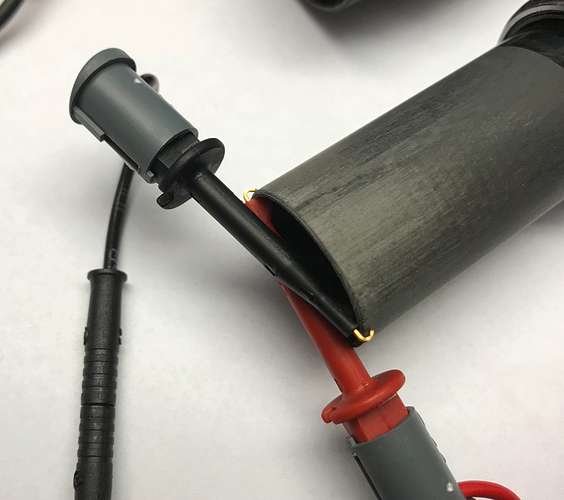Hi all, the weather and the bad CONDX delay my true WSPR comparison of using the carbon-fiber rods for vertical antennas, but I still tried to continue my analysis. Here are my recent findings:
- The material has quite a high DC resistance: When measuring with a miliohm-meter, the resistance of one half circumference of the largest section gives 150 - 300 Ohms for ca 2 - 3 cm. There might be some contact resistance involved, but even additional pressure does not change that a lot, and the section I used to measure seems to exhibit the raw carbon-fiber without covering or resin surface.
The materials shown in the quadrocopter community videos on Youtube had values in the 1 - 10 Ohms range.
So it seems that the fishing rod materials use more resin or a different fiber arrangement or geometry.
I bet that many wet trees or bushes we have near our antennas have about the same DC resistance.
- I also checked wether the rods detune inductors. For that, I used the base loading coil from my SOTA vertical antenna design (actually a previous version). The inductance of ca 12 uH is almost unchanged when you insert the full, collapsed carbon-fiber fishing rod. It will be even less if only one hollow segment will be inside the coil.
A bit inconclusive is the observation that other objects from ferromagnetic materials also do not have a major influence on the inductance (I only tried steel, iron etc.).
However preliminary this is at this point, I expect that the further experiments will show that carbon-fiber rods are much more useful for SOTA antennas that we may assume, even for verticals.
Attached, please find a few pictures.
73 de Martin, DK3IT
Test Setup for Resistance:
Resistance DAM 5 m Rod
Resistance DECATHLON 6m Rod
Inductance of Coil Before Measurement
Almost no Change in Inductance




